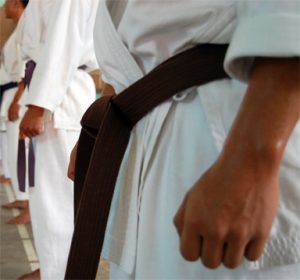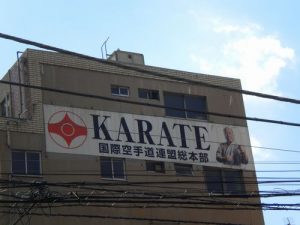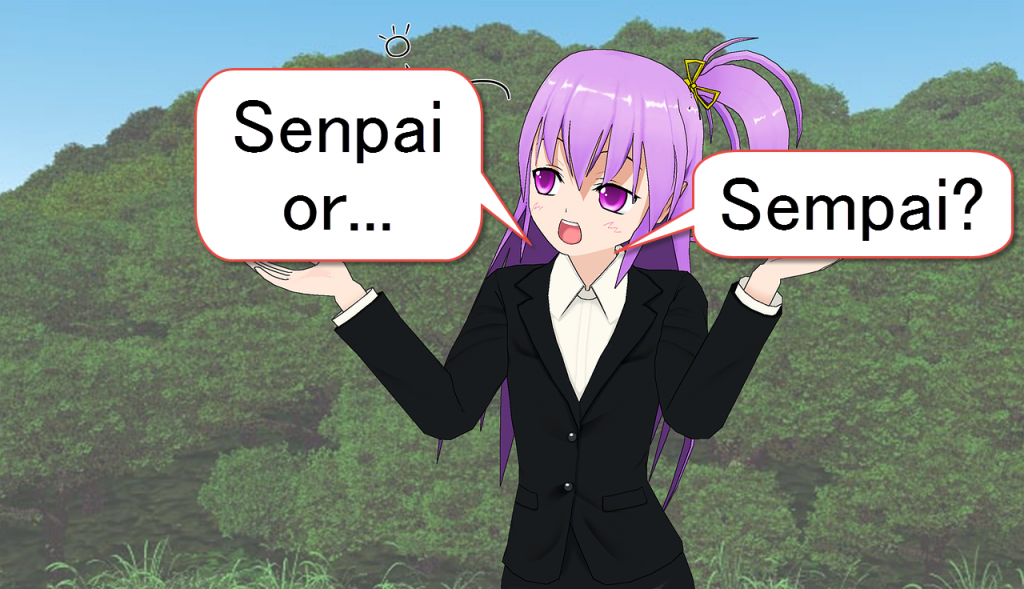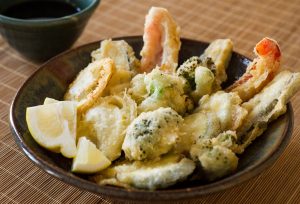In written English you might have noticed with “せんぱい” the Japanese hiragana character “ん” sometimes gets written as “n,” like in “senpai,” while other times it is written as “m,” like in “sempai.” Which is right?!
 As a reminder, Senpai (せんぱい – or kanji 先輩) – [sem pi] is someone who is of a higher social standard, such as an upperclassman or upperclasswoman, someone of a higher age, or senior in rank. Sem or先means early, in advance, first or prior. Hai, 輩 means fellow, person, colleague, or people.
As a reminder, Senpai (せんぱい – or kanji 先輩) – [sem pi] is someone who is of a higher social standard, such as an upperclassman or upperclasswoman, someone of a higher age, or senior in rank. Sem or先means early, in advance, first or prior. Hai, 輩 means fellow, person, colleague, or people.
The English spelling of Japanese words are approximations and “Senpai” is ALWAYS a correct and proper English spelling for the Japanese from which Senpai is derived.
Because of “mosaic nasals” sometimes n’s sound like “m’s” or go unpronounced altogether.
The correct romaji translation is senpai, because there is no stand alone “m” in Japanese. Confused yet?!
(Romaji is the use of the English alphabet to spell Japanese words.)
Because there is no “m” in Romaji, the letter “n” is used as a substitute.
In Japanese, senpai is spelled せんぱい. The Japanese kanna ん corresponds with the romaji “n”. The only kana representing m sounds are maま, miみ, muむ, meめ,and moも. However, phonetically senpai is pronounced like seMpai. So, it is not phonetically wrong to spell sempai, but the proper spelling is senpai.
Look at how some of the following are written in Japanese and then how we should accurately transliterate them (i.e. write them out in english letters).
Example. The popular Japanese dish with a peculiar name: 天麩羅 ・天ぷら (てんぷら)
According to the hiragana: Tenpura is the correct spelling but the correct translation phonetically is “TeMpura”!
 My former martial art is another example, Kenpo. Again, It is “technically” not correct to spell kenpo with an “m” because “mp” does not exist in the Japanese language, and when written in Japanese, the letter “m” must always be followed by a vowel. “N” on the other hand, as stated earlier, is the only English letter that is not represented by a syllable in Japanese. So, it should never be Kempo, only Kenpo, but always pronounced keMpo! LOL Confusing no!?
My former martial art is another example, Kenpo. Again, It is “technically” not correct to spell kenpo with an “m” because “mp” does not exist in the Japanese language, and when written in Japanese, the letter “m” must always be followed by a vowel. “N” on the other hand, as stated earlier, is the only English letter that is not represented by a syllable in Japanese. So, it should never be Kempo, only Kenpo, but always pronounced keMpo! LOL Confusing no!?

Another example is Honbu -本部(Headquarters). Honbu is how it is written, HoMbu is how it is pronounced. It is confusing as they look / sound so similar.
In closing, no matter how they are spelled, they should always be translated phonetically as seMpai, hoMbu, teMpura, keMpo, the spelling is always with an “N”…. but it should always be practiced as The Society of the Ultimate truth! Kyokushinkai!


So I’m a Japanese that grew up in the states and returned to Japan as an adult – but I learned this the hard way by making critical mistakes at the workplace by using the N instead of M in cases of words that have ん before a B or a P. せんぱい is Sempai, なんば is Namba, しんぶん is Shimbun, しんぺい(name) is Shimpei
I think a lot of foreigners make this mistake so the N version is gaining some traction I believe but among the elderly and in formal setups, you want to “spell” with an M.
Thanks for making it clear. Can you also please explain why OSU is pronounced as OSS and perhaps explaining a little bit about its etymology and its meanings. I am a father a karateka and it always amazes me how widely it is used and the spelling-pronunciation disparity is very remarkable. Thank you.
I don’t agree with the spelling advice.
It should imho always be spelled how it is pronounced.
The rest of the world does it like this 😀 in french italian or german texts, the Japanese words SeMpai and HoMbu are spelled like this.
However it is a nice read and informative.
You should to know that japanese key ‘n’ – ん sounds like ‘m’ previous to ‘b’, ‘p’ and ‘m’. And this is the rule of japanese phonetics. That’s why せんぱい sounds: ‘sempai’. But せんせい sounds as ‘sensei’.
I’ve seen this explained in different ways, but I think this one brings it all together clearly. But, I have one conclusion to the article that I made on top of all it. No matter what one reads where, or what may be concluded from any article here or anywhere, when you attend any Martial Art school, it would be up to that Master and/or Sensei as to the accepted pronunciation, and spelling within their Dojo. So we can do all of the should be, and ought to be’s we want to, in any specific Dojo, the teacher has the… Read more »
“The Romanization system” — excuse me, which one? There isn’t any one standard system for the world. I would know; I studied the Japanese language with the traditional Hepburn system which is widely considered the de facto standard and the better way to accurately render the Japanese pronunciation for Westerners. Being a speaker of Finnish (the Finnish orthography is highly phonemic, i.e. spelled as it’s spoken), I am of the opinion that it is important that Latin transliterations should be consistent phonemic representations which unambiguously indicate words’ pronunciations.
[…] Senpai or Sempai: Which is right?! […]
No, it should be written “sempai” in English, because that’s how it’s pronounced. Just because the Japanese alphabet is limited, doesn’t mean you should limit the Latin alphabet when transliterating Japanese words. It’s not as if anyone could confuse the correct hiragana spelling either, since there’s no character for “m” in Japanese anyway. It’s easy to grasp that “sempai” and similar words are spelled with ん, since there aren’t other characters to choose from; therefore, there’s no risk of grammatical mistakes either. The correct pronunciation is “sempai”, so it should be written that way. Pronunciation is key. You already agree… Read more »
This is more to do with Rendaku, and Syllable N compounds rather than mere pronunciation. The kana are based in 50 sounds (Goju-on) and romaji is a way of writing Japanese using roman characters. There are linguistic rules for compound words. i.e. If a syllable N occurs before a B, M, or P, it changes to an M, e.g., En means monkey & Pi (compound of Hi) means elbow, are not written as Enpi, but as Empi when made into a compound word. Yes individually “Sen” & “Pai” are spelt that way but as a compound word in roman letters… Read more »
Awesome, this clears things up for me, now the only problem is I have read texts Chinese Kempo the Japanese also American Kenpo….ggrrrrrr. Should I just always say KeMpo, no matter???
Like kata Enpi ( Empi ).
Lol, Osu!
Owe! Thanks! Excellent article and it cleared up significant confusion for me.
Using western language translation are often questioned.
Proper spelling have variations and are used differently.
The article give a good explantion and valuable discussion.
Sake often softens the reply.
Kenpai !🍻
Kampai!🐙
Do you leave the cup full or empty when you end drinking ?
Thanks for the clarifications, Scott,
I read with pleasure your articles. All the best, OSU!
So, I supposed it also applies to Kenpo and Kempo?
Thank you for the explanation. I see it spelled in both ways. Now I can more correctly explain the difference with students and friends. Refer them as well to the article.
Osu!